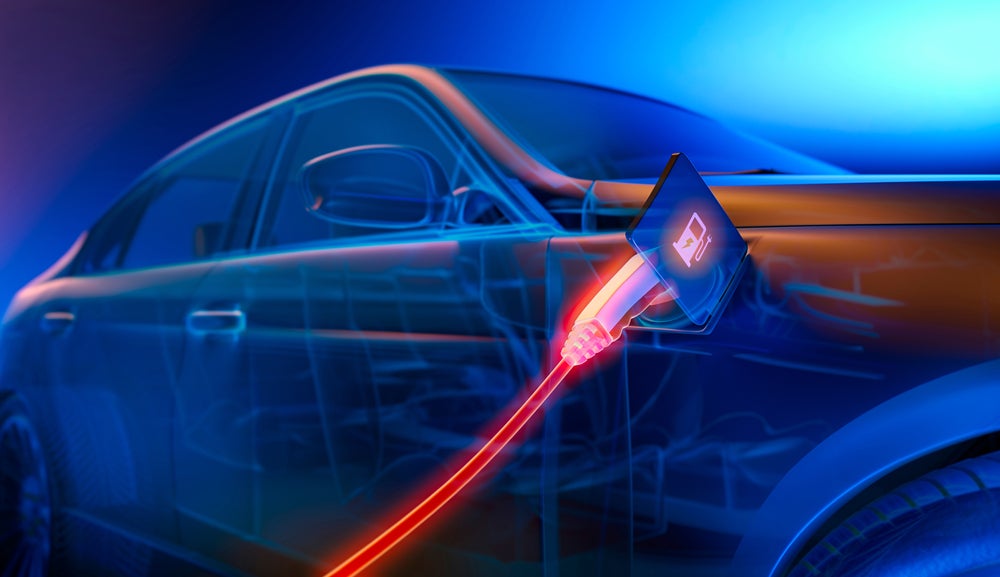Relatively few individuals have experienced EVs first-hand, prompting Chris Black, commercial director at vehicle leasing company LeasePlan UK to offer this primer on driving electric.
There’s been a massive surge in interest in EVs in recent years. While many people have never experienced EVs first-hand – a recent LeasePlan study found that only 1 in 10 drivers have ever driven one – their technology is becoming ever more popular in the UK.
The growth of EV driving has brought along myths and misconceptions, many of which have snowballed and entered the public discourse. Often, these are small and easy to overcome, but others can create unnecessary concerns for new EV drivers.
In the face of a climate emergency, it’s crucial that we encourage more people to make the switch, nd to do this, we need to create better awareness of EVs and their usage.
So, here are some of the biggest myths about EVs, busted.
EVs can’t be charged efficiently at home
EVs can be charged at home and in more ways than one.
How well do you really know your competitors?
Access the most comprehensive Company Profiles on the market, powered by GlobalData. Save hours of research. Gain competitive edge.

Thank you!
Your download email will arrive shortly
Not ready to buy yet? Download a free sample
We are confident about the unique quality of our Company Profiles. However, we want you to make the most beneficial decision for your business, so we offer a free sample that you can download by submitting the below form
By GlobalDataThe best option is to install a wall box charger. These normally come as fast chargers, delivering electricity at around 7kW, allowing drivers to charge their vehicles safely and reliably. They are relatively inexpensive to install, with government grants available to help cover up to 75% of the costs. Drivers can also opt to install a smart charger, which comes automatically pre-set to charge vehicles outside of peak hours, thus saving you money.
The second option is to use the standard slow charger provided with your vehicle. This comes in the form of a 3-pin plug and takes power directly from your domestic supply. These are simple to use and extremely portable. But at 3kW, it can take a while to charge your vehicle, with some larger models needing up to 24 hours. Most manufacturers recommend that you only use these in an emergency.
EVs can’t be charged or driven in the rain
EV chargers and cables are waterproof, and charging sockets are protected against water damage. Similarly, EVs are safe to drive in the rain and snow and can even be taken through traditional car washes.
Driving electric EVs need oil to run
EVs don’t use engine oil, which means you don’t have to change the oil regularly like you would a petrol or a diesel vehicle. However, some of the components like brakes and tyres still require lubrication as part of regular, professional vehicle maintenance.
Old EV batteries get thrown away
EV batteries already last an average of 8 to 10 years in a car, and old batteries can be paired with other renewable energy sources to power a home, or even a business. Beyond this, EV batteries are often broken down into smaller cells which can be used as renewable energy storage.
Driving electric EVs have the same brakes as ICE vehicle
Unlike ICE vehicles, EVs operate a system known as regenerative braking. During the process, an EV’s braking system recaptures kinetic energy and converts it to electricity – effectively recharging its own battery. This system helps optimise an electric car’s efficiency, by requiring less effort to accelerate forward.
You need a different license to drive an EV
No, you don’t need a special or different driving license to drive an EV. A standard UK license, whether for automatic or manual vehicles is all you need to get behind the wheel of an EV.
However, for those who take their test in an EV or an automatic, your licence will not cover you to drive a manual car.
Driving electric EVs don’t work in extreme temperatures
Most EV batteries tend to work best at temperatures of between 20 and 25°C; anything above this may have a negative impact on the vehicle’s driving range as well as its charging speed. Therefore, motorists should take extra care when driving in hot weather.
The good news is that most EV models now have highly efficient cooling systems which will help to keep the battery temperatures low. However, drivers should try to always park their vehicles in shaded areas when it’s hot to maintain the vehicle’s efficiency.
The Grid won’t be able to cope if everyone drives an EV
Grid capacity isn’t as big a problem as most people think. According to the National Grid Group, additional solar panels and more energy-efficient appliances have reduced peak demand by 16% between 2002 and 2020. That’s enough headroom for the projected 10% increase if everyone switched to electric cars, as long as that demand is managed effectively.
One of the ways we can do that is by using data and connectivity to monitor energy usage across the UK’s charge points. As of July 2022, all new charge points must have a data connection, with the ability to measure, record and transmit usage (in minutes and as units of energy) and delay charging or slow it down during periods where grid demand is highest. Manufacturers will also have to provide a user interface for drivers, such as an app, to set parameters.








